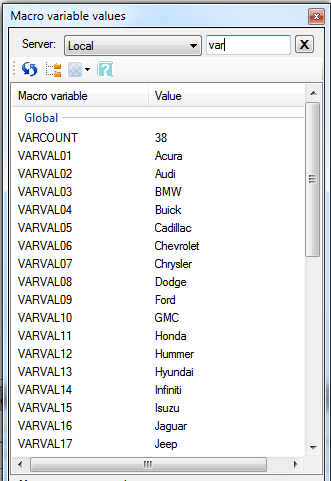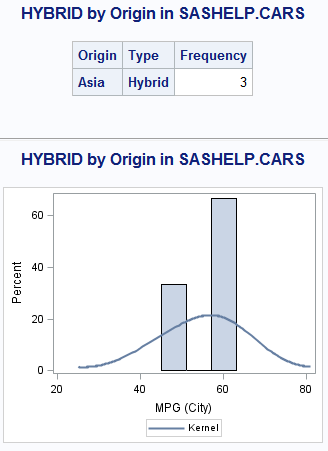All Posts

“When I started using predictive analytics in 1991, I had a desktop computer with a 600 megabyte hard drive running SAS® 5.0 something,” said Olivia Rud, respected business intelligence thought leader and author of Data Mining Cookbook: Modeling Data for Marketing, Risk and Customer Relationship Management. Technology has vastly improved
ODS Graphics system was initially motivated by the need for high quality graphs for SAS Base, STAT, and other analytical procedures. Use of SG Procedures, ODS Graphics Designer and GTL by users too has initially focused on analytical graphs. But just like wheels on carryon bags that started for the specific needs of flight

Did that set off a trigger for you? It did for my SAS SQL 1: Essentials class, packed with SQL and SAS programmers alike. To clarify matters I pulled up some examples to help get the differences quickly. Set operators and Joins are similar in that they both combine multiple

Earlier this week I described a common programming pattern in the SAS macro language. The pattern sets up a loop for processing each distinct value of a classification variable. The program uses the PROC SQL SELECT INTO feature to populate SAS macro variables. The effect: you can roll your own

As public safety officials leaf through their favorite criminal justice periodical they are greeted with pages and pages of analytics advertisements. These ads are laden with promises of robust and scalable solutions, improved efficiencies and, yes, the promise of prediction. While reading the advertisements, the mental conversation may go something

I think this DATA step Post-It author may be a bit like my mother. When I was a child, my mother was always coaching me on two things: being independent and being efficient. I believe those are the two traits she considered most admirable in a person. It's little wonder
Creating a graph that looks nice, with readable, high resolution fonts is important and should be easy to do. With SG procedures and GTL, this is easy to do with a simple option, but not the default. Creating a high resolution (image) for a graph consumes higher system resources. When working on a graph,

How to write a SAS macro program to repeat your SAS processing for each value of a BY grouping variable.
Art Carpenter’s newest book, Carpenter’s Guide to Innovative SAS Techniques, offers advanced SAS programmers an all-in-one programming reference that includes advanced topics not easily found outside the depths of SAS documentation or more advanced training classes. No matter how you approach the use of SAS software, the techniques provided in
When the data is classified by multiple class variables, you can certainly create graphs using BY variables. This results in separate graphs, one for each level of the BY variable crossings. Each graph is scaled by its own data subset, and comparisons across BY levels is harder. When comparisons need to be

You can keep track of and report anything with SAS, even motivation - or the lack thereof. This team has developed a portal to analyze and report their ride data. It could just as easily be used for groups who want to work together to lose a few pounds, train

When you are constantly taking the data tables and completing joins to begin working on your reports or analysis it might be time to consider creating permanent views. Then you can just add the view to the Enterprise Guide project rather than dealing with the joins in a Query Builder

St. Patrick’s Day is almost here and for many it’s the perfect time to think green. This holiday, for me as a US citizen, means a little less than a month before taxes are due. I am often thinking green, as in money and saving some! For SAS users from around

A few weeks ago, in Northern Virginia, a 30 foot highway sign fell onto I-66 and landed on a passing pickup truck. Fortunately, no one was hurt, but it drew media attention and caused motorists in the area to wonder about the safety of other signs and the transportation network

After unwittingly getting involved recently in a code vs GUI discussion another pro GUI vote came in yesterday when presenting to a customer's internal user group. When creating and using prompts in SAS Enterprise Guide, it is a no-brainer to recommend leveraging the %_eg_WhereParam as it handles all the special







